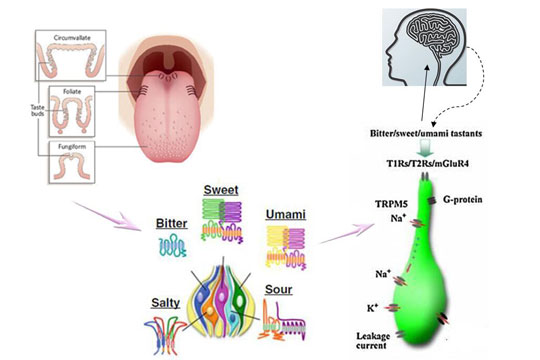







Biomimetic sensors and biosensors for qualitative and quantitative analyses of five basic tastes
April 10th, 2017
As is known to all, the basic taste includes sweetness, bitterness, sourness, saltiness and umami. The core of taste evaluation is the sense of taste. Sensory evaluation and chemical detection, as the methods of evaluating flavor quality, are commonly used in many products such as food stuffs, beverages and drugs. However, these methods have exposed their drawbacks. Sensory evaluation employing the panelists is susceptible to human physical and psychological conditions as well as individual preference, leading to high subjectivity but low objectivity and reproducibility. And chemical detection can acquire quantitative data of substances which cannot be linked to the taste sensing. In order to improve the situation, more effective methods or technologies for clarifying the sense of taste are expected.
Recently, researchers from China National Rice Research Institute (CNRRI) summarize the recent advances concerning biomimetic sensors and biosensors for analyses of five basic tastes. Biomimetic sensors consist of potentiometric, voltammetric and impedance spectrum sensors modified with specific and designated biomimetic materials. More importantly, biosensors based on taste cells, tissues, nerves and enzyme as the sensing elements have been developed, and nanotechnology and microfluidic chip have been utilized for the fabrication of biosensors. The advantages and disadvantages of these sensors are analyzed, and practical applications for five basic tastes via sensors are discussed.
This work provides the theoretical guidance and technical support for the construction of the bionic intelligent evaluation system of rice taste. The research finding has been published in Trends in Analytical Chemistry online on December 23, 2016 (DOI: http://doi.org/10.1016/j.trac.2016.12.007). More details are available on the links bellow: http://www.sciencedirect.com/science/article/pii/S0165993616303041
· Study Reveals How the Clock Component OsLUX Regulates Rice Heading
· Scientists Further Unravelled the Underlying Mechanism of Heading Date Control in Rice
· Improving the efficiency of prime editing in rice
· A New Infection Mechanism of Ustilaginoidea virens is Revealed
· Scientists Further Reveal the Infection Mechanism of Ustilaginoidea virens
CNRRI Today
Copyright © 2014- China National Rice Research Institute